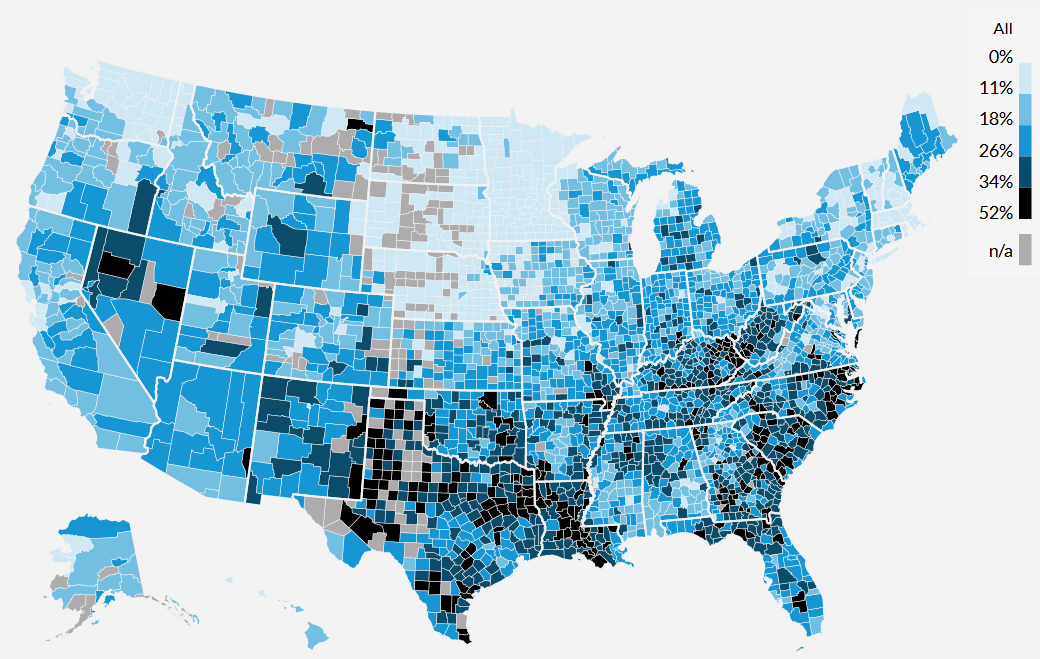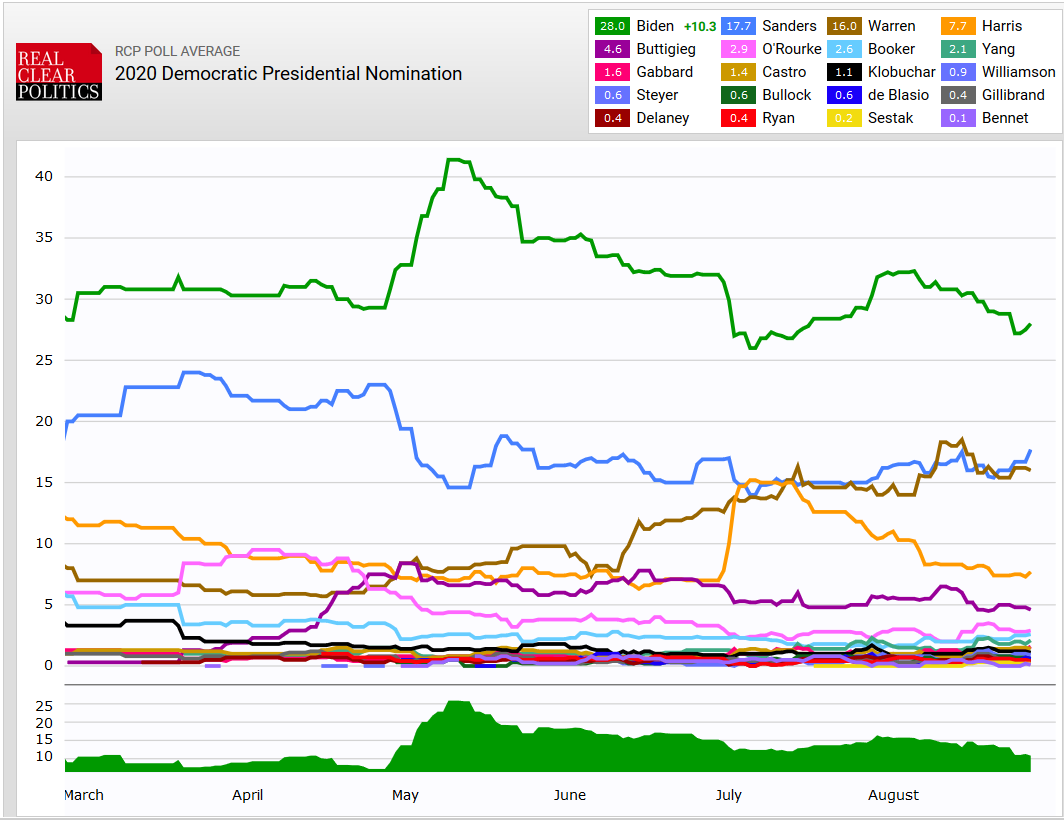A Big, New, Moderate Idea from…Bernie?
Actually…Yes, and It’s Darn Smart
Several weeks ago, I sat down to write about a compelling, moderate idea that no presidential candidate was highlighting, but which seemed like a great issue for some Democrat – especially one with centrist leanings – to grab hold of.
I never thought that candidate would be Bernie Sanders.
Last week (with my near-finished draft still eyeballing me) Sanders announced that he would be crafting a plan to address that issue: alleviating Americans’ medical debt.
Why is this such a good (moderate) idea? The biggest threat that Democrats face to their 2020 chances is walking over a liberal cliff in pursuit of progressive perfection or in a misguided attempt to rev up the base (which seems particularly inane per analysis just in the past week from Third Way’s Lanae Erickson and the New York Times’ David Leonhardt, in addition to mine).
Yet, the two most-discussed ideas for Democrats this campaign cycle have been forgiving student loan debt and implementing “Medicare for All,” both of which fall into that strategic trap. Americans express tepid 57% support for even limited student loan debt forgiveness (which flips to 52% opposition if paid for by a tax on the wealthy) and Medicare for All support melts away under the lightest touch: down to a grim 34% when voters are told that it is the same as single-payer and might raise taxes. Democrats who run in swing areas know this danger: in the 2018 midterm elections where Democrats made health care their top issue, they ran 967 campaign ads in “red-to-blue” districts after Labor Day. Only two proposed Medicare for All, and both candidates lost (notably, prominent Democrats are now trying to back away from the idea).
By contrast, the issue of alleviating medical debt gets at the same important underlying issues – the way health care costs affect people’s lives and the staggering amount of overall debt that Americans carry – but in a more morally compelling, practical, and politically powerful way.
Here are five reasons why Democrats (or even Republicans) should jump on this:
1) It’s Meaningful
Many American families walk a financial knife’s edge and are only one illness away from falling off. A jaw-dropping 71 million Americans have some kind of debt in collections and about the same number – about 4 in 10 – have difficulty paying their medical bills. Up to two thirds of all bankruptcies in the U.S. may be caused by people getting sick (while there’s some debate over that figure, half of Americans fear that a medical event could lead to bankruptcy, showing their deep financial strain and why people were so mixed about this economy even when it seemed steadier). Getting insurance coverage isn’t a cure-all either, because of those with some medical debt, 60% had health insurance when they incurred it. And a small investment makes a big difference: the median amount of medical debt in collections today is only $681. That means by relieving debts, we can achieve lot of economic bang – in the form of working Americans being more able to pay bills, build credit, and spend on economy-fueling necessities – for not a lot of buck.
2) Smarter Political Demographics
Politically, it’s easy to see why Democrats would be tempted to focus on student loan debt and Medicare for All. Millennial voters make up about 30% of the 2020 Democratic primary electorate and hold about 60% of student loan debt. African Americans comprise about 20% of the Democratic primary electorate and are disproportionately burdened by student debt. But medical debt hits those same demographics just as hard. Millennials accrue the most medical debt, and incur it the most frequently. 31% of African Americans have past-due medical debt compared to 23% of white Americans.
And beyond the base, the medical debt issue packs a bigger punch. It’s a particular concern to working-class white Americans (37% of those earning $50,000 a year or less have had trouble paying medical bills), and that is exactly the swing voter group that both parties need to win in 2020. Moreover as the map below shows, the severity of overdue medical debt is fairly widespread, but with concentrated pockets in a mix of swing and Republican areas in the south, mountain west, and Appalachia; meaning there is both added resonance in swing congressional districts and a real Republican constituency for this issue, which gives it a prayer among senate Republicans.
The Urban Institute
3) Strong Moral Argument
In comparing relief for student loan debt and medical debt, it’s worth considering Pete Buttigieg’s point: “as a progressive, I have a hard time getting my head around the idea of a majority who earn less because they didn’t go to college subsidizing a minority who earn more because they did.” By contrast, problems paying medical bills hit hardest among low-to-middle income families. Everyone can relate to getting sick, and the idea that any American can be dragged into financial distress because of human frailty strikes a clear moral chord – one that has proven to resonate politically.
4) Speaks to People’s Immediate Concerns
80% of Americans live paycheck to paycheck. They think more about their bills today than “bold” ideas for the future. This is what Democratic governors in conservative or swing states have been warning about when they refer to the dangers of “pie in the sky” or “idealistic but unrealistic” policies. Many Democratic base voters also prefer practical fixes for their problems now. For example, polling for the Black Economic Alliance shows that African American voters favor more pragmatic and tangible political ideas and candidates. So, Medicare for All might be the most economically efficient long-term solution (or not), but building a campaign message around rebuilding 1/6th of our economy from scratch while taking away the private insurance people have flies in the face of everything we know about how people think politically (i.e., loss aversion). By contrast, easing medical debt strikes at people’s worst fears and helps their current reality. It’s right at their gut, not over their heads.
5) A Manageable Problem
Even though other sources of American debt are bigger, medical debt is a better target, because it is a bite we can chew. Even if we erased all of the current $81 billion Americans owe, as Sanders seems to be proposing, that’s a lot less than other Democratic policy proposals (all of Sanders’ put together cost $48 trillion). But the real cost is likely far smaller. First of all, relief could, and should, be tied to income both for fairness and to further reduce the cost. And organizations like RIP Medical Debt have demonstrated that most overdue medical debt can be bought for pennies on the dollar – 10,000 people in Appalachia got relief last month when donors purchased $10 million in medical debt for $10,000.
The bottom line is that Americans’ soaring debt and lack of affordable health care are critical issues. They are the right things to talk about, and helping Americans manage their health care cost problems today is the right thing to do. So credit where it is due to Bernie Sanders for raising medical debt relief as a pragmatic, meaningful, and politically potent solution. If Democrats want an effective idea with political teeth in both the primary and general election, they should follow suit.




